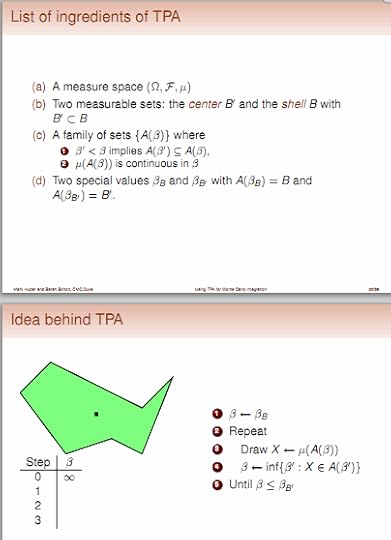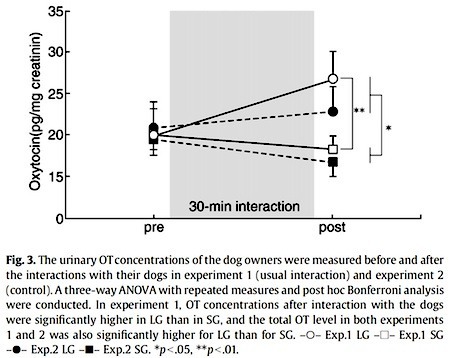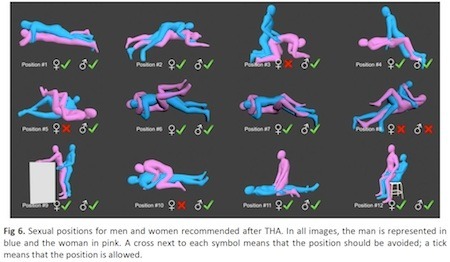Marc Abrahams's Blog, page 461
September 25, 2013
Explaining the Tootsie Pop Algorithm
 Mark Huber and Sarah Schott prepared a lecture called ”Using TPA [the Tootsie Pop Algorithm] for Monte Carlo integration.” The authors are at Claremont McKenna College and Duke University, respectively.
Mark Huber and Sarah Schott prepared a lecture called ”Using TPA [the Tootsie Pop Algorithm] for Monte Carlo integration.” The authors are at Claremont McKenna College and Duke University, respectively.
You can see their presentation online, if you want to.
The algorithm can be used to try to answer the [somewhat ill-defined] question: How many licks does it take to get to the center of a Tootsie Pop?
BONUS: Luxuriant Flowing Hair Club member Aaron Santos wrote an estimable book — called How Many Licks? —about how to estimate the answer to such questions.
BONUS: Here’s one recent answer.

Effect of James Bond on Macaque Brains
This study tests previously untested extremes of the power of James Bond movies:
“Functional Connectivity of the Macaque Brain across Stimulus and Arousal States,” Sebastian Moeller, Nambi Nallasamy, Doris Y. Tsao, and Winrich A. Freiwald, Journal of Neuroscience, vol. 29, no. 18, May 6, 2009, pp. 5897-5909. (Thanks to investigator Neil Martin for bringing this to our attention.) The authors, at California Institute of Technology, Harvard Medical School, and The Rockefeller University, report:
“In this study, we set out to systematically partition the macaque brain across different visual stimulus conditions and arousal states using ICA, and then compare the spatial structure of resulting ICs across the different states…. Visual stimuli were projected from an LCD projector (1280 × 1024 pixels, 60 Hz refresh rate), onto a screen positioned 49 cm in front of the monkey’s eyes…. Stimuli consisted of: clips from ‘James Bond, Tomorrow Never Dies‘”.
Below: a portion (not necessarily a portion used in the study) of the film:

Artifical Nose Progress
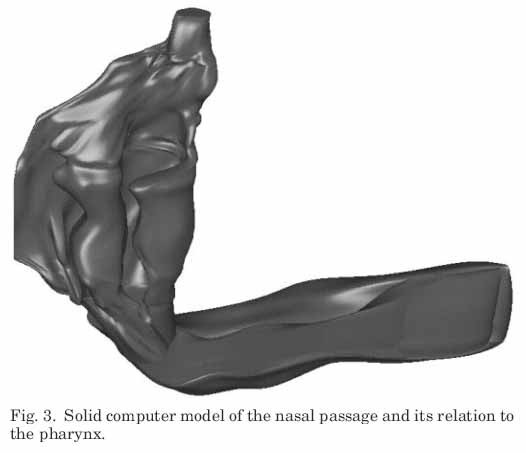 For some people, mention of the phrase ‘Artificial Nose’ would probably conjure up notions of the many types of electronic aroma sensors currently in use. Say, e.g. NOSE II
For some people, mention of the phrase ‘Artificial Nose’ would probably conjure up notions of the many types of electronic aroma sensors currently in use. Say, e.g. NOSE II
But these are by no means the only type of ‘Artificial Nose’. Take, for example the artificial nasal cavity built by J. T. Kelly, A. K. Prasad, and A. S. Wexler of the Department of Mechanical Engineering, at the University of Delaware, US. It’s described in their paper for the Journal of Applied Physiology, 89: pp. 323–337 entitled ‘Detailed flow patterns in the nasal cavity’.
“In this work, particle image velocimetry was used to determine two-dimensional instantaneous velocity vector fields in parallel planes throughout a model of the nasal cavity that was subjected to a nonoscillatory flow rate of 125 ml/s. The model, which was fabricated from 26 computed tomography scans by using rapid prototyping techniques, is a scaled replica of a human right nasal cavity.“
There were, however, some shortcomings regarding the silicone nasal cavity model. For example : “… nostril hairs are not included in the replica.”Future work, explain the team, may incorporate not only nostril hairs, but might also be able to emulate the “… warm, moist, and compliant properties of nasal tissue“.
Also see: (partially related) Profiling the Nasal Ranger ® (for field sniffers)

September 24, 2013
Marie Dacke explains how dung beetles navigate
Marie Dacke explains how she and her colleagues learned that dung beetles use the Milky Way to navigate their way home. The team was awarded an Ig Nobel Prize (jointly in the fields of biology and astronomy) for that work. This talk was part of TEDxLundUniversity:
BONUS: The Lund University announcement about the Ig Nobel Prize

Effect of Dogs’ Seeing on Owners’ Peeing
Does looking at the amount of oxytocin in dog owners’ pee as those owners respond to their dogs’ gaze affect the amount of oxytocin in the pee of the researchers looking at the owners responding to the dogs’ looking at them? That lengthy question is not addressed in this study:
“Dog’s gaze at its owner increases owner’s urinary oxytocin during social interaction,” Miho Nagasawa, Takefumi Kikusui, Tatsushi Onaka, Mitsuaki Ohta, Hormones and Behavior, vol. 55, no. 3, March 2009, pp. 434–441. The authors, at Azabu University and Jichi Medical University, Japan, report:
“Oxytocin (OT) has been shown to play an important role in social bonding in animals…. In this study, to examine the possibility that urinary OT concentrations of owners were increased by their “dog’s gaze”, perhaps representing social attachment to their owners, we measured urinary OT concentrations of owners before and after interaction with their dogs. Dog owners interacted with their dogs as usual for 30 min (interaction experiment) or were instructed not to look at their dogs directly (control experiment). We observed the behaviors of owners and their dogs during the experiments, and measured OT concentrations by radioimmunoassay in urine samples from the owners collected just before and 20 min after interaction with their dogs…. We conclude that interactions with dogs, especially those initiated by the dog’s gaze, can increase the urinary OT concentrations of their owners as a manifestation of attachment behavior.”
Here’s detail from the study:
(Thanks to investigator Neil Martin for bringing this to our attention.)

September 23, 2013
Ig Nobel events in Italy
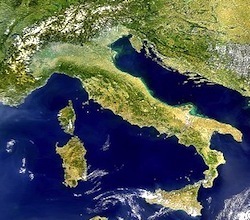 Join us for Ig Nobel events in Perugia and Rome, Italy:
Join us for Ig Nobel events in Perugia and Rome, Italy:
PERUGIA: Saturday, September 28, 9:00 pm. Perugia Science Fest, Sala di Notari. Featuring Marc Abrahams and Ig Nobel Prize winners Alberto Minetti (new Italian Ig Nobel winner!) and Kees Moeliker (homosexual necrophilia in the mallard duck). [PREVIEW]
ROME: Tuesday, October 1, 7:30 pm. Libreria Assaggi di San Lorenzo, Via degli Etruschi, 4, Roma. Marc Abrahams, Gilberto Corbellini (Sapienza University of Rome), Mario De Caro (University of Roma Tre), Armando Massarenti (Sunday Sole 24 Ore) discuss the Ig Nobel Prizes. This event is organized in collaboration with University Roma TRE and Museum of the History of Medicine (Sapienza University of Rome). [PREVIEW]

mini-AIR September issue: The Ig Nobel Prize winners, etc.
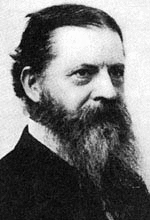 The September issue of mini-AIR (our monthly newsletter — it’s a wee little supplement to the magazine) just went out. You can read it online, too. Topics include:
The September issue of mini-AIR (our monthly newsletter — it’s a wee little supplement to the magazine) just went out. You can read it online, too. Topics include:
The new Ig Nobel Prize winners
Astronomy Applied to Whale Sharks
The Recovering Alcoholics / Coffee / Cigarettes Limerick Competition
and more
It also has info about upcoming events.
Mel [pictured here] says, “It’s swell.”
mini-AIR is the simplest way to keep informed about Improbable and Ig Nobel news and events. Just add yourself to the mini-AIR list, and mini-AIR will be emailed to you every month.

New Hip, Safe Sex Motion Study
A hip new hip project carefully studied people having sex, doing it for safety’s sake. The study is:
“Sexual Activity after Total Hip Arthroplasty: A Motion Capture Study,” Caecilia Charbonnier, Sylvain Chagué, Matteo Ponzoni, Massimiliano Bernardoni, Pierre Hoffmeyer, , Journal of Arthroplasty, epub September 6, 2013. This chart sums up the study’s medical insights, in a way that may be useful to practitioners:
The authors, at Artanim Foundation, Geneva, Switzerland, Medacta International SA, Lugano, Switzerland, University Hospitals of Geneva, report:
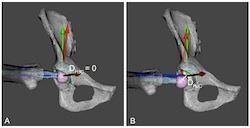 “Relative risk of impingement and joint instability during sexual activities after total hip arthroplasty (THA) has never been objectively investigated. Hip range of motion necessary to perform sexual positions is unknown. A motion capture study with two volunteers was performed. 12 common sexual positions were captured and relevant hip joint kinematics calculated. The recorded data was applied to prosthetic hip 3D models to evaluate impingement and joint instability during motion. To explore the effect of acetabular component positioning, nine acetabular cup positions were tested. Four sexual positions for women requiring intensive flexion (> 95°) caused prosthetic impingements (associated with posterior instability) at 6 cup positions. Bony impingements (associated with anterior instability) occurred during one sexual position for men requiring high degree of external rotation (> 40°) combined with extension and adduction at all cup positions. This study hence indicates that some sexual positions could be potentially at risk after THA, particularly for women.”
“Relative risk of impingement and joint instability during sexual activities after total hip arthroplasty (THA) has never been objectively investigated. Hip range of motion necessary to perform sexual positions is unknown. A motion capture study with two volunteers was performed. 12 common sexual positions were captured and relevant hip joint kinematics calculated. The recorded data was applied to prosthetic hip 3D models to evaluate impingement and joint instability during motion. To explore the effect of acetabular component positioning, nine acetabular cup positions were tested. Four sexual positions for women requiring intensive flexion (> 95°) caused prosthetic impingements (associated with posterior instability) at 6 cup positions. Bony impingements (associated with anterior instability) occurred during one sexual position for men requiring high degree of external rotation (> 40°) combined with extension and adduction at all cup positions. This study hence indicates that some sexual positions could be potentially at risk after THA, particularly for women.”
The authors also produced this educational video:

PR headline of the day: Hungering for baby
Today’s Press Release Headline of the Day is atop a press release from the Université de Montréal:
Why do you want to eat the baby?
(Thanks to Roger Highfield for bringing this to our attention.)
BONUS (possibly unrelated): Jonathan Swift’s “A Modest Proposal”

Oblique Linguistic Enigmas: deciphering “NOT/NOT”
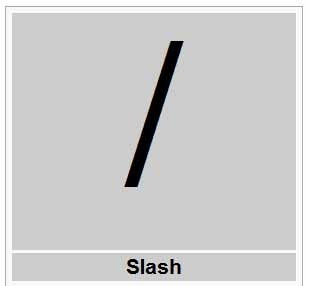 Languages, it is said, are never static – words, their meaning, their pronunciation and preferred syntax are constantly evolving. But the changes are not restricted to words – punctuation marks too, evolve. Take, for a recent example, an unusual construct from an official US Govt. source – reprinted by the UK Guardian as part of their ongoing mass-communications surveillance revelations. [Aug. 09, 2013]
Languages, it is said, are never static – words, their meaning, their pronunciation and preferred syntax are constantly evolving. But the changes are not restricted to words – punctuation marks too, evolve. Take, for a recent example, an unusual construct from an official US Govt. source – reprinted by the UK Guardian as part of their ongoing mass-communications surveillance revelations. [Aug. 09, 2013]
“… analysts may NOT/NOT implement any USP queries until an effective oversight process has been established …”
Note the unusual use of the forward slash – a.k.a. [the] Stroke, Oblique, Frontslash, Separatrix, Slak, Slant, Virgula Suspensiva .
Improbable has consulted two highly respected authoritative sources in an attempt to interpret it, viz. Punctuation Matters: Advice on Punctuation for Scientific and Technical Writing, by John Kirkman, and Eats, Shoots & Leaves: The Zero Tolerance Approach to Punctuation, by Lynne Truss. But, sadly, neither provides any firm lead. Nevertheless, we offer the following observations.
[1] The most usual meaning of the slash is as an abbreviation for ‘exclusive or’ , e.g. “ham/cheese” – but in this case it can’t apply because the two alternatives either side are identical.
[2] If the slash was absent the sentence would make perfect sense – As in “Please do NOT NOT use the footpath” which would mean “Keep off the grass”
[3] What if the slash wasn’t a slash – but instead a Solidus, conveying the meaning ‘divided by’ ? Unfortunately, the sentence still doesn’t parse. NOT [divided by] NOT would surely be 1 (or, at a stretch, infinity).
NOTE: If you do manage to decrypt the sentence please do NOT NOT NOT send your results to Improbable (except by carrier pigeon). We have reason to believe that this website is being monitored by members of the public.
ALSO SEE: (possibly partially pertinent) On the presumed competence of British (and other) spies (Improbable Research, August 11th, 2013)

Marc Abrahams's Blog
- Marc Abrahams's profile
- 14 followers


